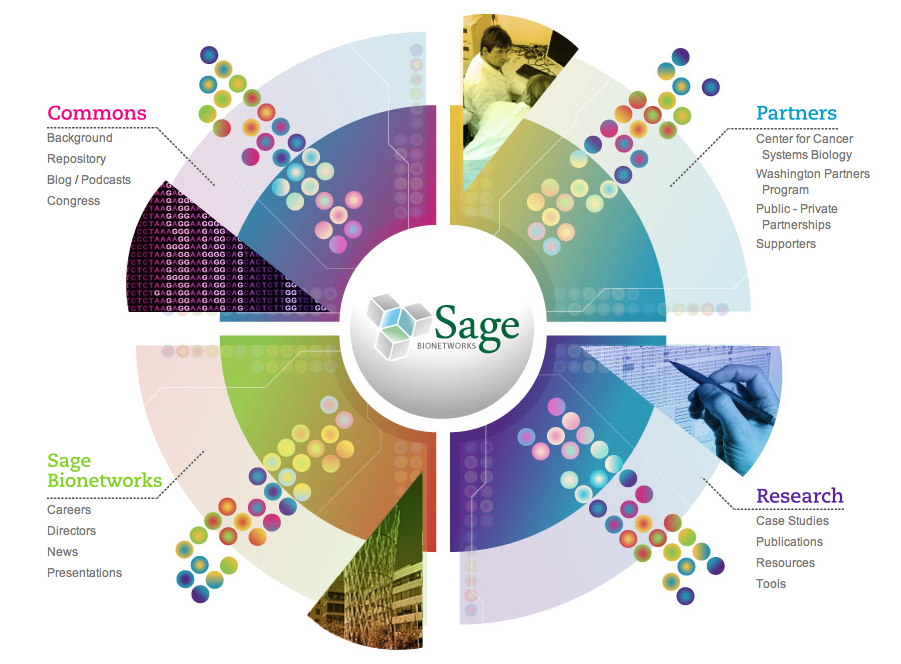The diagram to the left is a pictorial representation of 22 of my 23 chromosomes as provided by the personal genomics company
23andMe, which I sent samples of my DNA (mailing a tube full of spit) for analysis. The colors represent the likely geographic origins of my DNA,
green blocks representing African origins,
orange blocks representing Asian origins, and
blue blocks representing European origins. In my case, the DNA of Asian origin most likely is Amerindian, a population whose genetic features is most like East Asian populations.
My family immigrated from Ecuador to the US when I was little. And I remember distinctly when the US Census form first came to our home in the space where we were asked to choose race we checked off "Other" and filled in "mestizo". We grew up thinking of ourselves as
mestizo rather than belonging to any of the races listed as options in the form. Mestizos being people of both European and Amerindian ancestry, it was a conjecture apparent from one quick look at my family. The results of this DNA analysis done by 23andMe confirm this long held assertion of ours.
The genetic map I show here is only one type of data provided by 23andMe. The results provided to me online also tell me what traits I am likely to have based on my genetics. The company accurately predicted, for example, that I most likely have dark brown eyes and wavy hair. They predicted my blood type, and suggest I am only mildly lactose tolerant. What's interesting about the latter result is that
lactose tolerance is a trait primarily determined by genetics, but the environment can have a role in influencing it (for example, by the nature of bacteria living in my intestines). The prediction is pretty good, as I can tolerate a glass of milk OK, but more than that gets me belly upset.
Since the genetic information gleaned from my DNA can be so useful in telling me about traits I know of or suspected, what can it tell me about traits I don't know about, in particular, medically relevant traits, such as propensity towards certain diseases or disorders, or responses to drugs? Though the results to such things are presented and clearly explained, they are always presented "assuming [my] European ethnicity". The company makes a call based on the sources of DNA in my genome (shown in the above diagram) and says I'm European. This is important because versions of genes that determine traits don't usually do it in isolation, they do it in the genomic context in which they exist. Meaning that one version of a gene X for trait A in one genome may cause trait B in another. This is due to combinations of different gene versions that can interact to determine what the trait.
Knowing that the nature of our genomes is tied to the ethnicity we belong to, and that this can affect interpretations of genetic data, how relevant is it to my data that I am Hispanic? Hispanics (or Latinos) run a whole spectrum of genomic signatures, from nearly 100% European, to nearly 100% Amerindian, to nearly 100% African, and the vast majority of populations are in between. So it seems that being Hispanic does not lend itself to increasing the predictive power of genetic signatures. In fact, it may be completely irrelevant, in contrast to more homogenous populations, such as, for example Ashkenazi Jews, Japanese, or Zulus.
 |
| Figure from the Bustamante lab website, showing the principal components underlying genetic variation in Latin American populations. Note that genetic variation constitutes a range determined by three sources of genetic variation: African, Native American (or Amerindian) and European. |
Given that most health standards in the United States are based on a white population with DNA largely originating in Europe, how can health guidelines and recommendations be refined by personal genomics so they more accurately reflect our individual biologies? At the moment, it seems we have inadequate information or understanding of how to best use genetic information to make health decisions, some of which will vary depending on our genetic backgrounds, some of which will be more influenced by environmental conditions. Can a slightly lactose tolerant person like me, for example, improve lactose tolerance with a certain diet? Or would it be best for me to ignore the "got milk" campaign altogether and forgo milk in my diet? The role of ethnicity, genetics and health is one I hope to see explored in the years to come at scientific conferences and in research publications.















